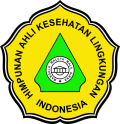STUDI KEBERADAAN JENTIK NYAMUK Aedes sp. BERDASARKAN KARAKTERISTIK TEMPAT PENAMPUNGAN AIR DI KELURAHAN TUNGKAL III, KUALA TUNGKAL, JAMBI
DOI:
https://doi.org/10.26630/rj.v15i1.2169Keywords:
Larvae, Aedes sp, bionomic, DHFAbstract
Tanjung Jabung Barat is a tidal area and is one of the endemic areas for dengue fever in South Sumatra. The highest cases were in the Kuala Tungkal Health Center area, especially in Tungkal III Village. This study aimed to determine the characteristics of the container which Aedes sp. prefer as breeding places. The research was conducted using visual methods inside and outside the home and identified the characteristics of each landfill. The results showed that 54.5% (36 out of total 66 houses were inspected) and 14.9% (57 of 381 TPA inspected) found Aedes sp. Based on its characteristics, the Aedes sp. prefer to lay eggs in TPA made of plastic (16.0%), drum-type (21.3%), and without cover (18.0%). Based on water sources, larva Aedes sp. more common in landfills that collect rainwater (26.0%) and outside the house (19.1%). Limited clean water sources encourage people to use large TPAs to collect rainwater. The use of abate, periodic larva monitoring, and increasing public knowledge are actions that must be taken.Â
References
Damanik, D.D., 2012. Tempat Perindukan Yang Paling Disenangi Nyamuk Aedes aegypti Berdasarkan Jenis Sumber Air.
Dinkes Kab. Tanjung Jabung Barat, 2019. Profil Kesehatan Kabupaten Tanjung Jabung Barat Tahun 2018, 1st ed. Kuala Tungkal.
Ekaputra, I.B., Ani, L.S., Suastika, K., 2013. Analisis faktor-faktor yang berhubungan dengan keberadaan jentik Aedes aegypti di Puskesmas III Denpasar Selatan. Public Health and Preventive Medicine Archive 1, 145.
Focks, D., Alexander, N., 2007. Multicountry study of Aedes aegypti pupal productivity survey methodology: Findings and recommendations.
Gafur, A., Saleh, M., 2015. Hubungan Tempat Penampungan Air dengan Keberadaan Jentik Aedes aegypti di Perumahan Dinas Type E Desa Motu Kecamatan Baras Kabupaten Mamuju Utara. HIGIENE: Jurnal Kesehatan Lingkungan 1, 93–99.
Hasan, A., Ayubi, D., 2007. Correlation between behavior of combating mosquitoes breeding sites with incidence of Dengue Haemorrhagic Fever in Bandar Lampung Municipality, Indonesia. Kesmas 2, 86–90.
Hasyimi, M., Harmany, Pangestu, 2009. Tempat-Tempat Terkini yang Disenangi Untuk Perkembangbiakan Vektor Demam Berdarah. Media Litbang Kesehatan XIX, 71–76.
Kemenkes, P., 2010. BULETIN DBD. Pusat data dan Informasi, Kementerian Kesehatan RI 2.
Kementerian Kesehatan RI, 2013. Buku Saku Pengendalian Demam Berdarah Dengue, Jakarta: Kemenkes RI.
Kementerian Kesehatan RI, 2019. Profil Kesehatan Indonesia 2018 [Indonesia Health Profile 2018].
Novelani, 2007. Studi Habitat dan Perilaku Menggigit Nyamuk Aedes serta kaitannya dengan kasus Demam Berdarah di Kelurahan Utan Kayu Jakarta Timur IPB. Institut Pertanian Bogor.
Rusli, Y., Yushananta, P., 2020. Climate variability and dengue hemorrhagic fever in Bandar Lampung, Lampung Province, Indonesia. International Journal of Innovation, Creativity and Change 13, 323–336.
Soedibyo, A., 2012. Kepadatan Populasi Larva Aedes aegypti Pada Musim Hujan Di Kelurahan Petemon, Surabaya. Jurnal Kepadatan Pop.
Wahab, C.D.S., Wanti, 2019. Studi Keberadaan Jentik Aedes sp. Berdasarkan Karakteristik Kontainer dan Perilaku Pemberantasan Sarang Nyamuk Demam Berdarah Dengue di Kelurahan Oebobo. Oehonis : The Journal of Environmental Health Research 3, 147–152.
Wahyuningsih, N.E., Dharmana, E., Kusnawati, E., Sulistiawan, A., Purwanto, E., 2017. Kelimpahan Aedes spp. di kota semarang, purwokerto dan yogyakarta. Jurnal Entomologi Indonesia 5, 45.
Wanti, Menofeltus, D., 2014. Water container and the Aedes sp. larvae density in Endemic and Free Dengue Haemorrhagic Fever. Jurnal Kesmas 9, 171–178.
World Health Organization, 1997. Dengue Haemorrhagic Fever Diagnosis, Treatment, prevention and Control, second Edi. ed.
World Health Organization, 2011. Comprehensive guideline for prevention and control of dengue and dengue haemorrhagic fever.
Yulianti, E., 2013. Keefektifan Penggunaan Papan Informasi Pemberantasan Sarang Nyamuk (PSN) dalam Menurunkan Keberadaan Jentik Aedes aegypti. Unnes Journal of Public Health 2, 1–10.
Yushananta, P., Ahyanti, M., 2014. Pengaruh Faktor Iklim Dan Kepadatan Jentik Ae.Aegypti Terhadap Kejadian DDB. Jurnal Kesehatan Lingkungan V, 1–10
Downloads
Published
How to Cite
Issue
Section
License
Copyright (c) 2021 Ruwa Jurai: Jurnal Kesehatan Lingkungan

This work is licensed under a Creative Commons Attribution-NonCommercial 4.0 International License.

Ruwa Jurai: Jurnal Kesehatan Lingkungan is licensed under a Creative Commons Attribution-NonCommercial 4.0 International License.
Authors who publish with this journal agree to the following terms:
- Authors retain copyright and grant the journal right of first publication with the work simultaneously licensed under a Creative Commons Attribution-Non Commercial License that allows others to share the work with an acknowledgment of the work's authorship and initial publication in this journal.
- Authors are able to enter into separate, additional contractual arrangements for the non-exclusive distribution of the journal's published version of the work (e.g., post it to an institutional repository or publish it in a book), with an acknowledgment of its initial publication in this journal.
- Authors are permitted and encouraged to post their work online (e.g., in institutional repositories or on their website) prior to and during the submission process, as it can lead to productive exchanges, as well as earlier and greater citation of published work.









